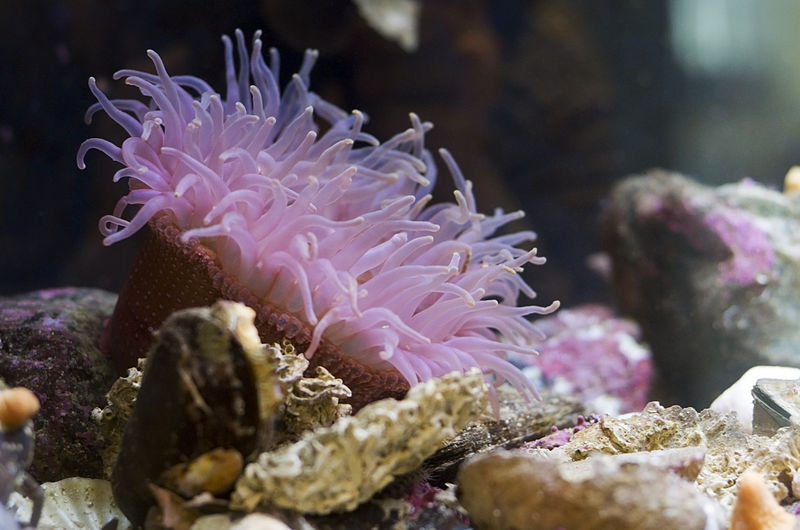Additional Facts
WHY DID I CHOOSE THIS PARTICULAR ORGANISM?
When getting this particular assignment, our professor stated that one requirement was that it has to be from a marine habitat. My professor also provided a collection of books that contained marine organisms, and recommended that we take a look through them. I had no previous knowledge about an organism that stood out to me, so I started from scratch. My initial thought was to pick an organism that caught my attention, because it would catch the attention of other's reading my web page. Sure enough, while flipping through the pages of the marine habitat book, I stumbled across the Neopetrolisthes maculatus. I then researched on multiple web sites and found that there was not a whole lot of information about the Spotted Porcelain Crab. Due to the lack of information and research, it intrigued me to establish a successful working web page with all the necessary information about the Spotted Porcelain Crab in one location; here!
WHY SHOULD YOU CARE ABOUT THE SPOTTED PORCELAIN CRAB?
You
should care about the
 Spotted
Porcelain Crab because without the existence of these organisms, the entire ecosystem
would be off-kilter. If humans continue the current rate
of destruction of our planet, these animals along with many others
will disappear and cause a multitude of problems. One example of
this would be if the Spotted Porcelain Crab went extinct, the sea
anemone that this organism has a mutualistic relationship with,
would die. The sea anemone cannot survive without the presence and
role of the Spotted Porcelain Crab. If the sea anemone were to go
extinct, many organisms that rely on the sea anemone would also go
extinct. If you
are following along, it only takes one organism
being whipped off the planet for good, to cause even more problems. If I can raise
awareness about this organism and get others to understand the
importance of the Spotted Porcelain Crab, we can reverse the process
of extinction and help build a more sustainable planet for all
organisms to thrive on, including humans.
Spotted
Porcelain Crab because without the existence of these organisms, the entire ecosystem
would be off-kilter. If humans continue the current rate
of destruction of our planet, these animals along with many others
will disappear and cause a multitude of problems. One example of
this would be if the Spotted Porcelain Crab went extinct, the sea
anemone that this organism has a mutualistic relationship with,
would die. The sea anemone cannot survive without the presence and
role of the Spotted Porcelain Crab. If the sea anemone were to go
extinct, many organisms that rely on the sea anemone would also go
extinct. If you
are following along, it only takes one organism
being whipped off the planet for good, to cause even more problems. If I can raise
awareness about this organism and get others to understand the
importance of the Spotted Porcelain Crab, we can reverse the process
of extinction and help build a more sustainable planet for all
organisms to thrive on, including humans.
OTHER INTERESTING FACTS?
In extreme cases, the Spotted Porcelain Crab has been known to hide inside the mouth of the sea anemone, only to reappear when the danger is out of sight (British Broadcasting Corporation, 2010). This behavior also explains why the Spotted Porcelain Crab is commonly referred to as the Anemone Crab.
Although the Spotted Porcelain Crab has a mutualistic relationship with the sea anemone, it is otherwise known to be a very aggressive organism. The main purpose for the large claws located at the front of the Spotted Porcelain Crab’s body are mainly used as a defense mechanism. When invaders come near the sea anemone, the Spotted Porcelain Crab will display the pinchers in hopes of scaring the invading organism away. If the intruder continues to invade the Spotted Porcelain Crabs territory, the sea anemone will take action by projecting a tentacle to sting the invader (British Broadcasting Corporation, 2010).
To learn about where I gathered all the information to make this web
page possible, click
here.
If you would rather return to the home page, click here.
